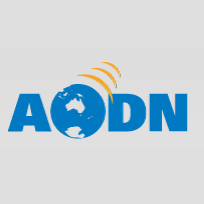Brief description
The Coffs Harbour (COF) HF ocean radar site is located near the point at which the East Australian Current (EAC) begins to separate from the coast. Here the EAC is at its narrowest and swiftest: to the north it is forming from the westwards subtropical jet, and to the south it forms eddies and eventually the warm water moves eastwards across the Tasman Sea, forming a front with the cold water of the Southern Ocean. The connection between coastal and continental shelf waters is fundamental to the understanding of the anthropogenic impact on the coastal ocean and the role of the ocean in mitigating urban marine water quality. The oceans off Eastern Australia and in particular in the region of New South Wales have a complex circulation structure, and are strongly connected with other regional seas and currents. The East Australia Current (EAC) flows from tropical regions southward along the NSW continental slope, bringing tropical biota southward. These current structures provide strong physical and biological connectivity, allowing substantial transport and dispersion of biota between regions, and influencing the transport and upwelling of nutrients, which are fundamental to biological productivity. The COF HF ocean radar is a WERA phased array system with 16-element receive arrays located at Red Rock (-23.942 S, 151.371 E) to the north of Coffs Harbour and North Nambucca (-24.111 S, 152.713 E) to the south. The area of focus is off Coffs Harbour where IMOS and the NSW government have mooring sites. These radars operate at a frequency of 13.920 MHz, with a bandwidth of 100 KHz and a maximum range of 100 Km. Within the HF radar coverage area surface currents are measured. Data are also collected from which wind directions and significant wave height can be calculated.Lineage
Statement: This site was offline from December 2020, and should resume from January 2024.Notes
CreditAustralia’s Integrated Marine Observing System (IMOS) is enabled by the National Collaborative Research Infrastructure Strategy (NCRIS). It is operated by a consortium of institutions as an unincorporated joint venture, with the University of Tasmania as Lead Agent.
The University of Western Australia (UWA)
Created: 02 12 2013
text: westlimit=152.90; southlimit=-31.00; eastlimit=154.00; northlimit=-29.80
text: uplimit=0; downlimit=0
User Contributed Tags
Login to tag this record with meaningful keywords to make it easier to discover
(Ocean Radar page on IMOS website)
uri :
http://imos.org.au/facilities/oceanradar![]()
(Quality Control procedures for IMOS Ocean Radar Manual)
Coffs Harbour - sea water velocity (QC data) - WMS layer (acorn_hourly_avg_cof_qc_timeseries_url/sea_water_velocity)
uri :
http://geoserver-123.aodn.org.au/geoserver/ncwms![]()
(ncUrlList help documentation)
uri :
https://help.aodn.org.au/web-services/ncurllist-service/![]()
(GoGoDuck help documentation)
uri :
https://help.aodn.org.au/web-services/gogoduck-aggregator/![]()
(Access To AWS Open Data Program registry for the Cloud Optimised version of this dataset)
uri :
https://registry.opendata.aws/aodn_radar_coffsharbour_velocity_hourly_averaged_delayed_qc/![]()
(Access to Jupyter notebook to query Cloud Optimised converted dataset)
global : b2f73bf6-39d4-4467-80ea-49084aea211d
- global : 85da1645-2c63-45fa-97b5-4125165b999d


